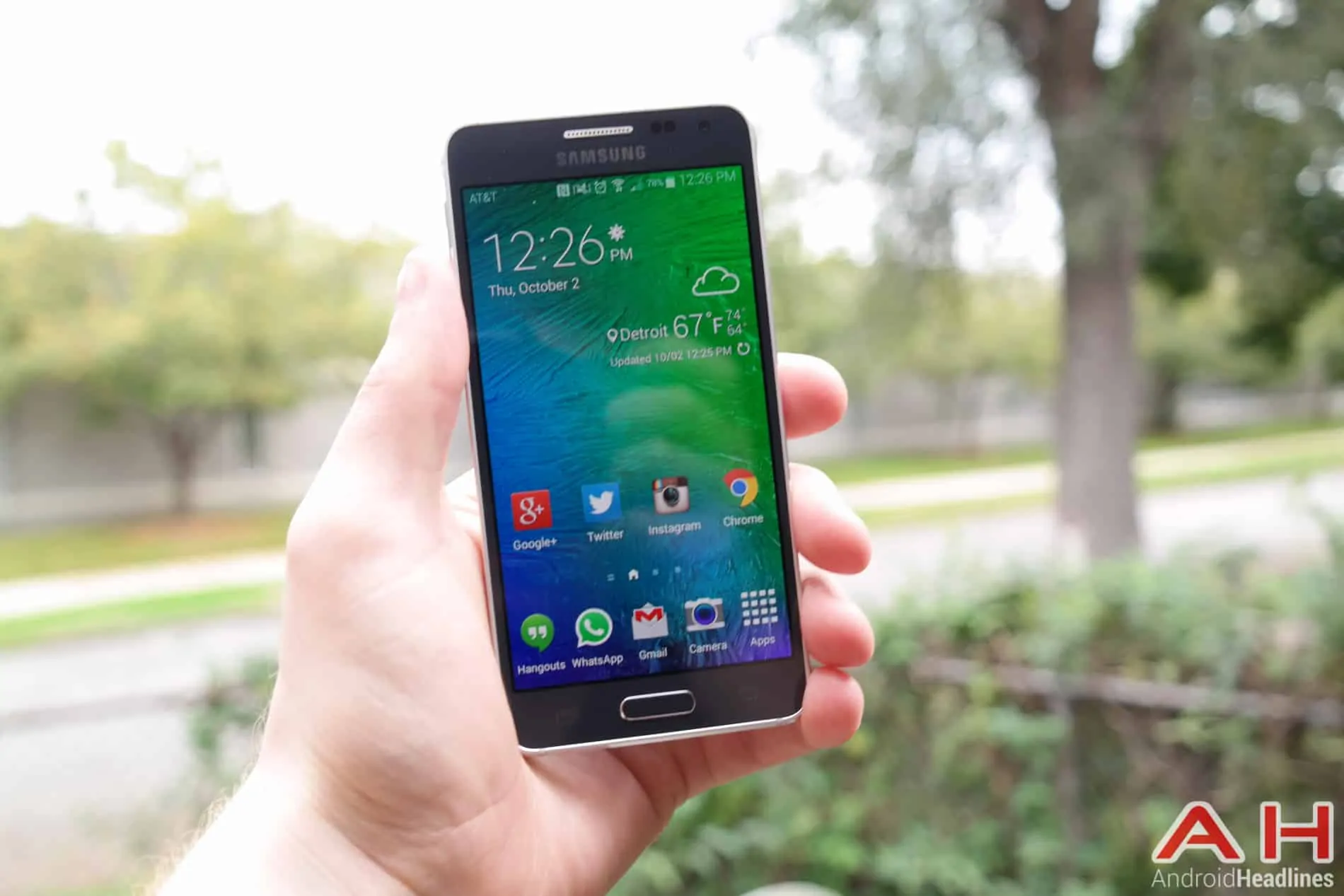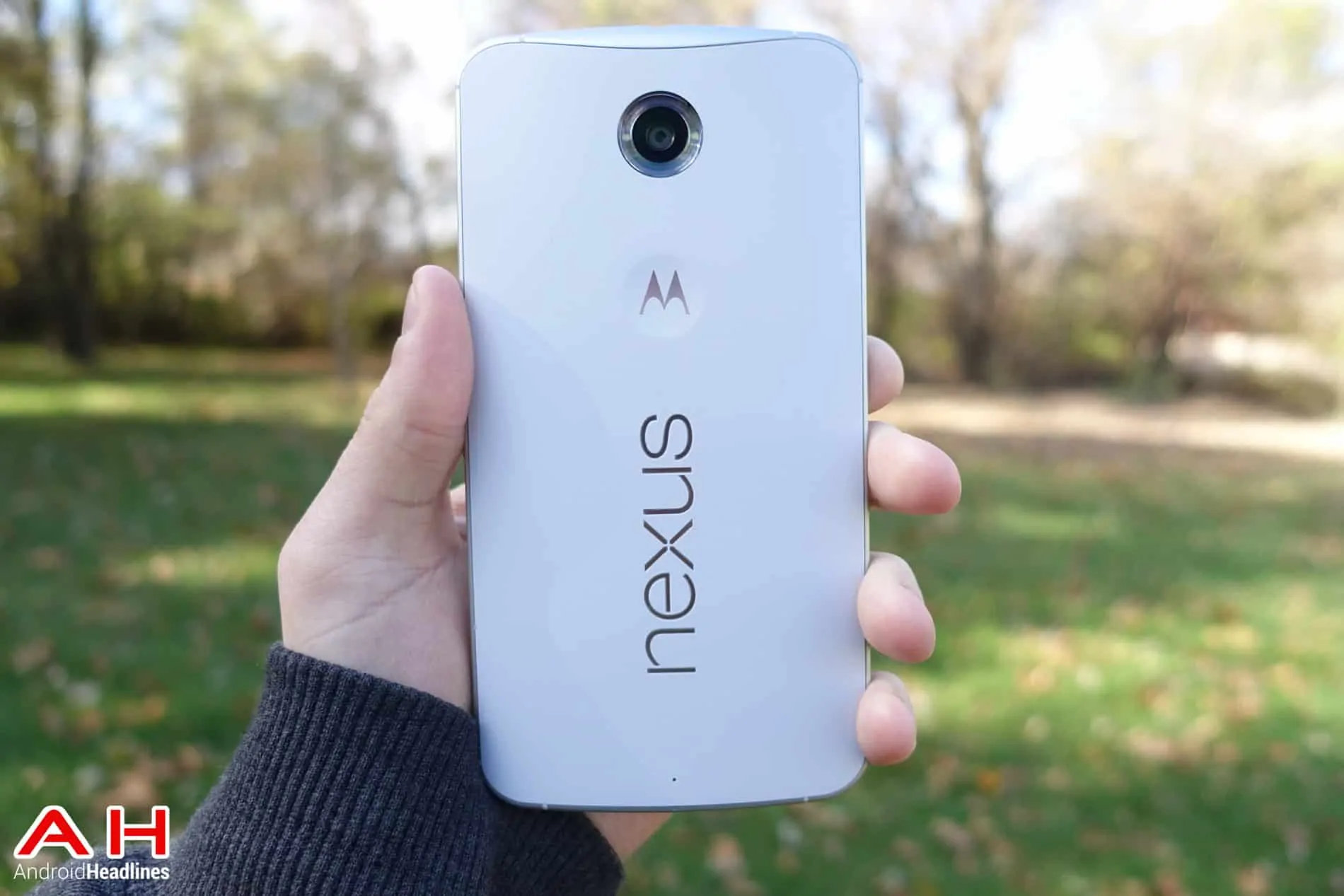Introduction
We have a good one for you today – the new Google Nexus 6 versus the Samsung Galaxy Alpha. Both of these smartphones look and feel like premium devices as both Google and Samsung were trying to create an upscaled device from what we were used to seeing from them. Google took the road to bigger everything – physical dimensions, display, specifications and price – and Samsung was trying to replacing their ‘plastic image’ with a new metal frame that has curved and sculptured edges. Both manufacturers succeeded in their quest to change that image with these new devices.
These two devices have very little in common – they both use AMOLED display technology, they both offer an internal storage option of 32GB and neither one offers room for expansion. The camera sensors are fairly close in size – Nexus 6 uses a 13MP and Galaxy Alpha uses 12MP, but they are still different and we will discuss that in the individual assessments. They both have the usual suspects – Wi-Fi, NFC, Bluetooth (Nexus 6 uses 4.1 vs 4.0 in the Galaxy Alpha), and microUSB 2.0 for charging and data transfer. They both use a metal frame for strength and both devices use that metal frame to help enhance their outward looks.
Please take a close look at the detailed specifications below and you can see how these two devices differ from one another. After that, we will look at each individual device and determine its pros and cons to help us decide on whether the Nexus 6 or the Samsung Galaxy Alpha wins this latest comparison.
Specifications

Google Nexus 6

The new Google Nexus 6, built by Motorola, is an extension of their great Moto X, commissioned by Google, to stretch it in every direction, spec’d up and priced up. This is totally out of character for Google’s Nexus smartphone series – they have always been a decent, solid device, with specifications a step below other flagship devices and priced so reasonably that Google could sell them all at their off-contract price. All of that changed with the new Nexus 6 – Google decided to go to a full-sized phablet and all-out flagship specs…this greatly raised the price, but Google wisely partnered with the carriers so they could offer it on a two-year contract at a substantially lower price.
The new Nexus 6 has a full AMOLED 6-inch Quad HD (QHD) display with a resolution of 2560 x 1440 pixels and 493 pixels-per-inch (PPI) – much larger than the 4.7-inch HD display on the Samsung Galaxy Alpha. While, both of these devices use a Qualcomm Snapdragon processor, the Nexus 6 uses the newer 805 quad core clocked at 2.7GHz versus the older 801 quad-core of the Galaxy Alpha. The Nexus 6 comes with 3GB of RAM versus only 2GBs in the Galaxy Alpha – both devices offer a 32GB model with no room for expansion and the Nexus 6 also has a 64GB model for only $50 more.
The cameras are very similar – the main shooter on the Nexus 6 is a 13MP sensor with auto-flash, a dual-tone LED flash ring that encircles the lens and Optical Image Stabilization (OIS)…the Galaxy Alpha is 12MP, auto-focus, single LED flash and no OIS. The Nexus 6 uses 2MP for the front-facing camera (FFC) and the Galaxy Alpha uses a 2.1MP shooter for those social media selfies and video chatting.
The batteries are vastly different with the Nexus 6 using a huge 3220mAh battery versus the 1860mAh battery in the Galaxy Alpha – now the Nexus 6 would certainly need more power for that 6-inch QHD display, but with the battery power-saving capabilities of the 805, it should help maintain battery life. The Qualcomm Snapdragon 800 series’ Quick Charge 2.0 capabilities, allows the Turbo Charger that comes with the device to charge up to 6-8 hours of usage on only a 15 minute charge.
As far as other features go, the Nexus 6 comes with dual front-facing stereo speakers, a water resistant nano-coating, wireless charging, the Turbo Charger is included, and of course, it comes with Android 5.0 Lollipop. The Nexus 6 is available in the Google Play Store or on all major U.S. networks. It is running about $250 on a two-year contract and $683 off-contract, even though Google announced it would cost $199 and $649 respectively.
Samsung Galaxy Alpha
 Critics have been complaining for years about Samsung’s use of plastic in their smartphones and crying for some sort of metal to upgrade their looks, and then the Galaxy S5 came out, looking relatively the same as its predecessor, the Galaxy S4. When sales were not in the stratosphere that Samsung was hoping for, they came out with the more limited Samsung Galaxy Alpha back in August. We were not even sure if it would ever find its way to the U.S., as we thought it was more of an experiment to see how the public would react. We reacted the natural way – we loved the design, hated the lower specs and hated the higher price…but, Samsung showed us that they could make a more stylish device. It became an AT&T exclusive device for $200 on a two-year contract and $613 off-contract…is this little beauty worth that kind of money?
Critics have been complaining for years about Samsung’s use of plastic in their smartphones and crying for some sort of metal to upgrade their looks, and then the Galaxy S5 came out, looking relatively the same as its predecessor, the Galaxy S4. When sales were not in the stratosphere that Samsung was hoping for, they came out with the more limited Samsung Galaxy Alpha back in August. We were not even sure if it would ever find its way to the U.S., as we thought it was more of an experiment to see how the public would react. We reacted the natural way – we loved the design, hated the lower specs and hated the higher price…but, Samsung showed us that they could make a more stylish device. It became an AT&T exclusive device for $200 on a two-year contract and $613 off-contract…is this little beauty worth that kind of money?
The Samsung Galaxy Alpha comes to us with a 4.7-inch Super AMOLED HD display with a resolution of 1280 x 720 pixels and 312 PPI – quite a bit different and lower than the Nexus 6. When it comes to processors, Samsung chose the same Qualcomm Snapdragon 801 clocked at 2.5GHz, the same one used in the Galaxy S5, but not up to the Snapdragon 805 found in the Nexus 6. The Nexus 6 also comes with 3GB of RAM versus the 2GB of RAM found in the Galaxy Alpha…and if either of these devices needs the extra RAM, it is the Galaxy Alpha with TouchWiz. The Nexus 6 also has a 64GB model that the Galaxy Alpha does not offer, and with no microSD slot in either device, that extra 32B is a nice feature.
Samsung decided not to use the Galaxy S5’s camera, but used just a 12MP with auto-focus and a single LED flash and no OIS. The 2.1MP FFC for social selfies and video chats is tolerable and slightly higher than the 2MP in the Nexus 6. Samsung also decided to use a very small, 1860mAh battery for the Galaxy Alpha, and it showed poor results in our test model that we reviewed.
Other features not found on the Nexus 6 – the Galaxy Alpha will support VoLTE and Wi-Fi Calling, it also has DLNA, a fingerprint scanner, heart rate sensor, LTE Cat.6 support, and has an Ultra Power Saving Mode (UPSM) to help extend battery life. It comes with Android 4.4.4 KitKat rather than the newer 5.0 Lollipop. It is available only on AT&T’s network and will cost you $200 on a two-year contract and $613 off contract.
…And The Winner Is…

Summary
This was an easy decision – the Nexus 6 just simply overwhelms the Samsung Galaxy Alpha with it specifications. It has a larger display (good or bad depending on your preference), a Quad HD display versus an HD on the Galaxy Alpha, a better processor, more RAM, a 64GB option, a better camera with OIS, a much larger battery, dual front-facing stereo speakers, water resistance and wireless charging. It is availability on all major U.S. carriers, uses Android 5.0 Lollipop, it will receive the fastest updates and yet it costs about the same amount as the Galaxy Alpha.
How could I possibly pick the Samsung Galaxy Alpha over all of that technology at the almost the same price? Please hit us up on our Google+ Page and let us know which device you would pick as the winner and WHY…as always, we would love to hear from you.

